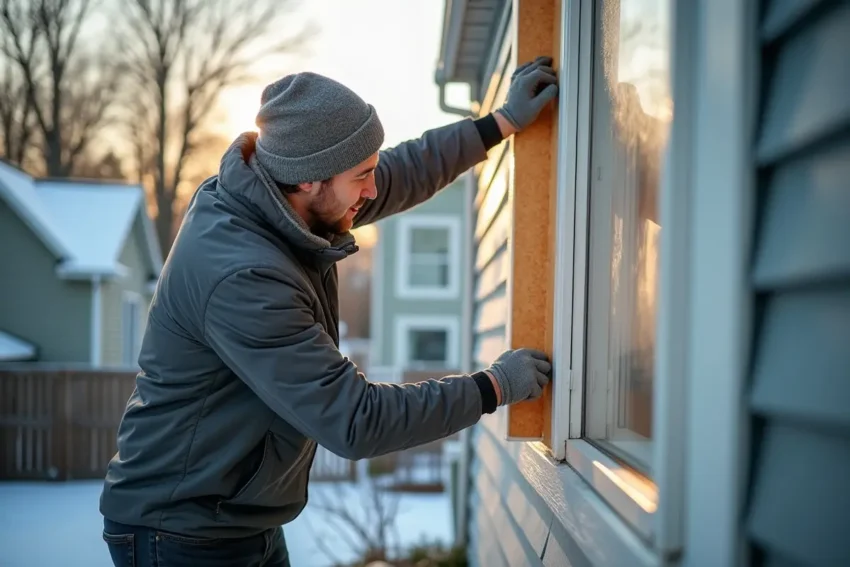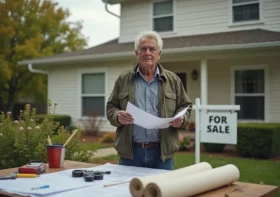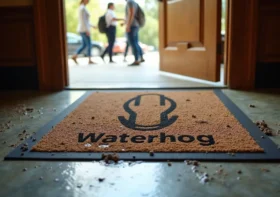Preparing Your House for Cold Weather: A Checklist

As temperatures drop and the days grow shorter, homeowners must turn their attention to preparing their houses for the challenges of cold weather. A well-prepared home keeps you and your family comfortable during the winter months and helps save on energy bills, prevents costly damage, and ensures safety.
Cold weather brings unique risks, such as frozen pipes, heat loss, and storm damage, making it important to have a thorough checklist to guide your seasonal preparations. From checking insulation to safeguarding plumbing, taking proactive steps now can spare you from headaches when winter arrives in full force.
Contents
Inspecting and Improving Home Insulation
One of the most effective ways to keep your home warm and energy-efficient during cold months is by ensuring proper insulation. Poor insulation leads to heat escaping through the walls, attic, or basement, which makes your home uncomfortable and drives up heating costs. Start by inspecting your attic insulation, as this is where much of the heat loss occurs. If the insulation looks thin or uneven, consider adding more layers.
Weatherstripping doors and sealing window gaps are other low-cost but highly effective methods for minimizing drafts. Don’t overlook your garage or basement, as cold air often seeps in through these spaces. By reinforcing insulation, you ensure that the warmth generated by your heating system stays inside, making your home cozier and more cost-efficient.
Preparing the Exterior and Emergency Supplies
Getting your home’s exterior ready for winter is just as important as what happens inside. Start by cleaning gutters to prevent ice dams and checking the roof for loose or missing shingles. If you notice issues, calling in expert roof repair services before the season sets in can save you from leaks or costly damage caused by heavy snow and ice.
Trim overhanging branches that could break under the weight of snow and damage your home. Alongside exterior care, stock an emergency kit with blankets, flashlights, batteries, food, and water. This ensures your family remains safe and comfortable during storms or power outages when quick help isn’t available.
Servicing Your Heating System and Fireplace
Your heating system works harder during the cold months, so scheduling a professional service before winter begins is crucial. A technician can clean filters, check for leaks, and make sure your system is running efficiently. Neglecting this step can lead to breakdowns when you need heat the most, as well as increased energy consumption.
If you have a fireplace or wood stove, inspect the chimney for blockages, such as creosote buildup or nests, which can become fire hazards. Consider having your chimney professionally cleaned to ensure safe operation. Stock up on firewood or fuel early, as supplies often dwindle during peak season.
Protecting Plumbing from Freezing
Frozen pipes are one of the most common and costly cold-weather problems homeowners face. When water freezes, it expands, causing pipes to burst and flood your home. To avoid this, insulate pipes in unheated areas like basements, garages, and crawl spaces. Foam pipe covers are inexpensive and easy to install, offering protection against freezing temperatures.
During particularly cold nights, let faucets drip slightly to keep water moving, reducing the risk of freezing. Disconnect outdoor hoses and shut off exterior water lines to prevent damage. It’s wise to know where your main water shut-off valve is located, so you can act quickly if a pipe bursts.
Taking preventive measures with your plumbing can save you from expensive repairs and major water damage when temperatures plummet.
Preparing your home for cold weather requires foresight, effort, and a well-rounded approach, but the payoff is significant in terms of comfort, safety, and cost savings. By improving insulation, servicing heating systems, protecting plumbing, and preparing the exterior, you reduce the risks associated with winter while ensuring your home remains warm and functional.
With a thoughtful checklist and a few proactive measures, you can enjoy the colder months with peace of mind, knowing your home is ready to face the challenges of the season.



